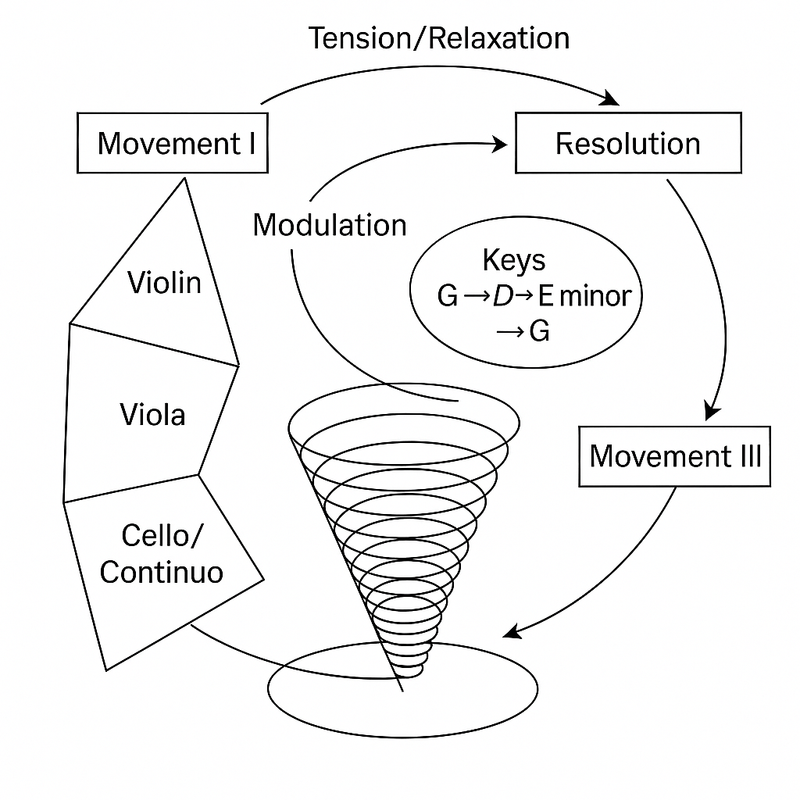Three movements, three strings, three core voices
The concerto famously has three movements with no slow middle movement in the original (some editions insert one). Plus the instrumentation for the first and last movements centers heavily on three parts (strings). So there’s an inherent “threeness”—a triangle motif. In geometry, the triangle is the simplest polygon, the basis of stability. That “3” echoes in the piece’s structure.
- Polyphony as polygon edges
Each instrumental line (violin, viola, cello/gamba, continuo) is like a vector or edge in a polygon. When they weave in counterpoint, they trace out paths in musical space that intersect, diverge, converge. The combined voices form a “mesh” — you can imagine a network of lines in 3D space (time, pitch, dynamics) creating a “sound polyhedron”. - Symmetry and periodic return
Themes return, motifs mirror, and sequences repeat — there’s a rotational or reflective symmetry. In one section, you might get a theme shifted (modulated) by a perfect fifth (geometric “rotation” in tonal space), then inverted (a mirror reflection). It’s like folding a pattern over itself. - Harmonic geometry: circle of fifths & tension/resolution arcs
The harmonic progressions — moving through dominant, subdominant, relative minors — traverse the circle of fifths (a circular geometry). Tension builds and resolves; you can map those progressions on a circle, or project them radially. The “distance” (number of steps in the fifths’ cycle) corresponds to how “far” the harmony moves from the home G major center. - Triangle of Voices ↔ Conscious Triangulation
In consciousness, you often triangulate: you, the observed, and the observer. In this concerto, the primary voices triangulate musical conversation. The piece becomes a conversation between parts and with the listener — much like your mind triangulates internal states with external stimuli.
Consciousness Analogy
- Voices = Streams of Awareness
In your mind: sensory input, memory, intention. They interweave like Bach’s strings. Sometimes one leads, others echo, sometimes they all merge. - Modulation = Shift in Awareness
When the concerto modulates (changes key or tonal center), it’s like your attention shifting focus. You’re in G major, then surprise — you’re in D major, then E minor. That’s your mind drifting to another “frame” or “mode”. - Resolution = Moment of Insight
When dissonances resolve, there’s relief. In consciousness, when conflicting thoughts unify, you get clarity or “aha” moment — the resolution of internal tension. - Structure = Cognitive Architecture
The architecture of the concerto — movements, episodes, sequences — parallels your cognitive structure: the way your mind divides experience into segments, loops on themes, and revisits refrains.

